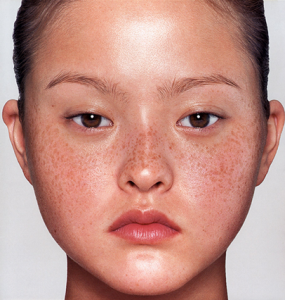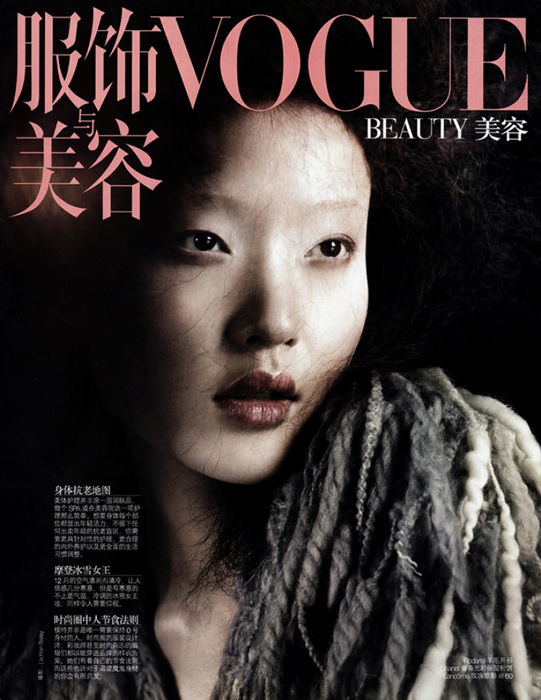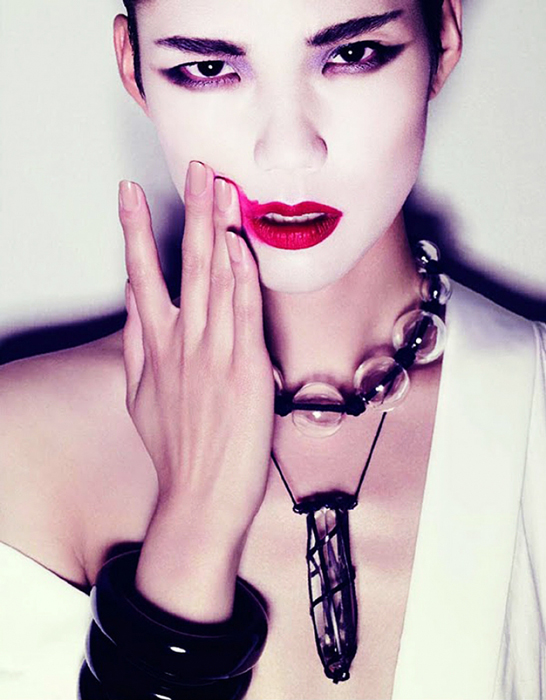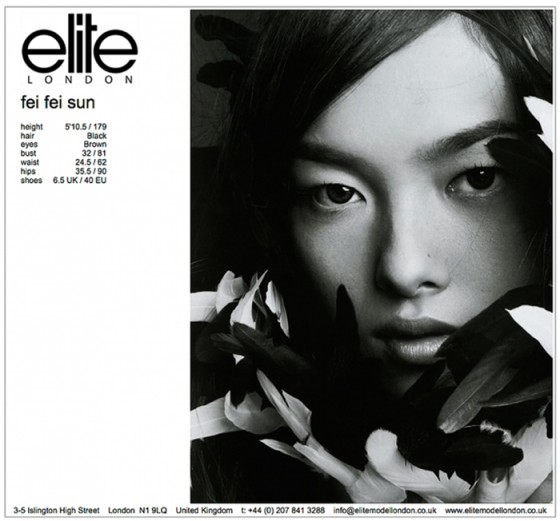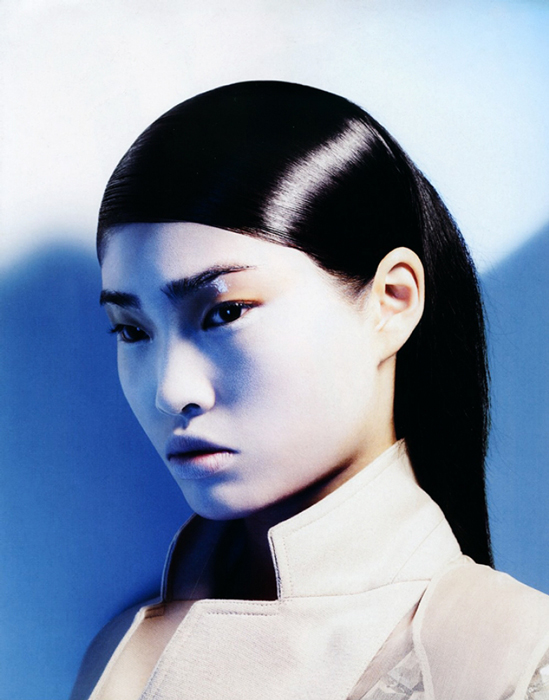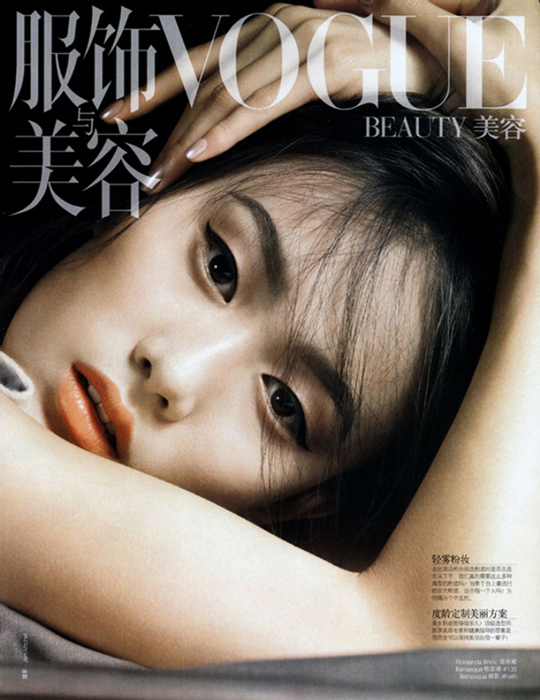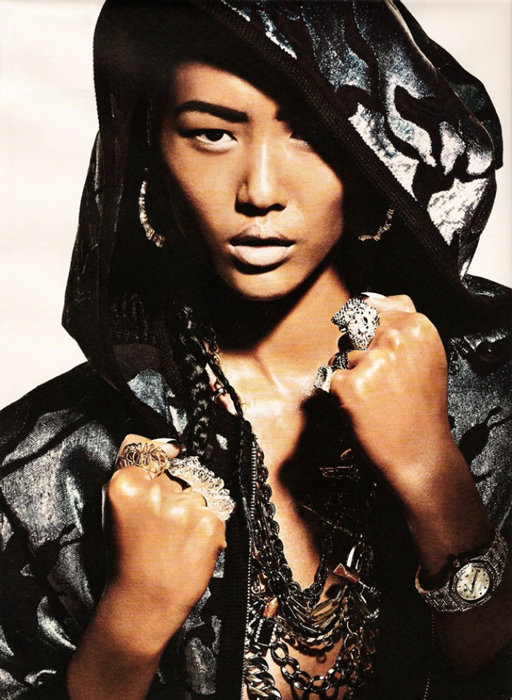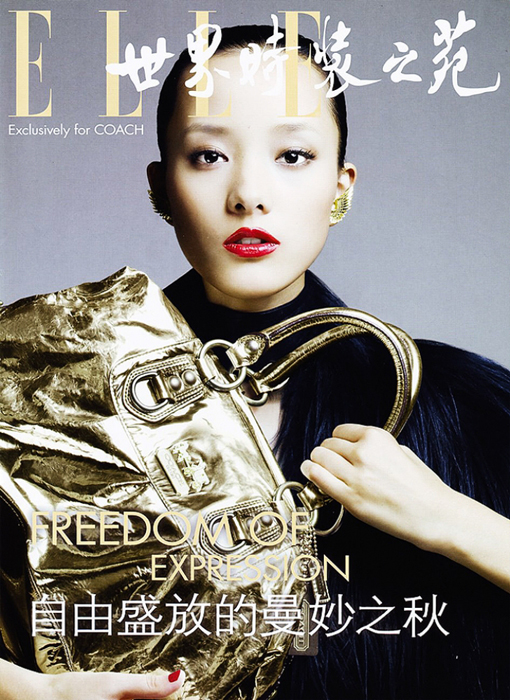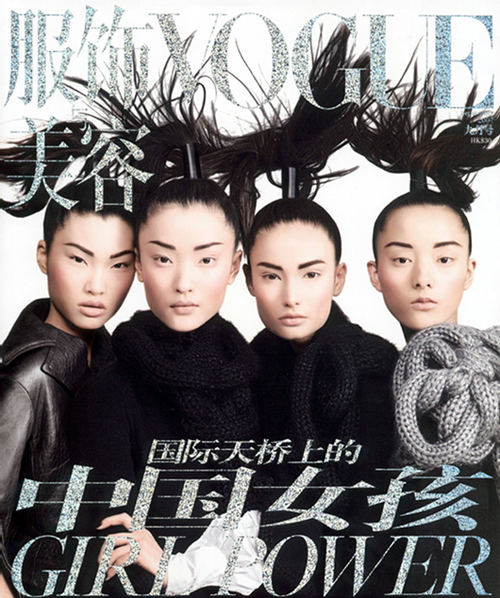 Above – Vogue China September 2007 by Greg Kadel featuring Stephanie Shiu, Du Juan, Mackenzie Hamilton, Emma Pei
Above – Vogue China September 2007 by Greg Kadel featuring Stephanie Shiu, Du Juan, Mackenzie Hamilton, Emma Pei
You might have noticed over the last two years that there is a generation of Asian Super Models showing up in Western Fashion Capitals and this is a first.
In the past, model Agencies in New York, Paris, London in Milan were representing only one or two Asian girls, but recently their presence is becoming flagrantly obvious.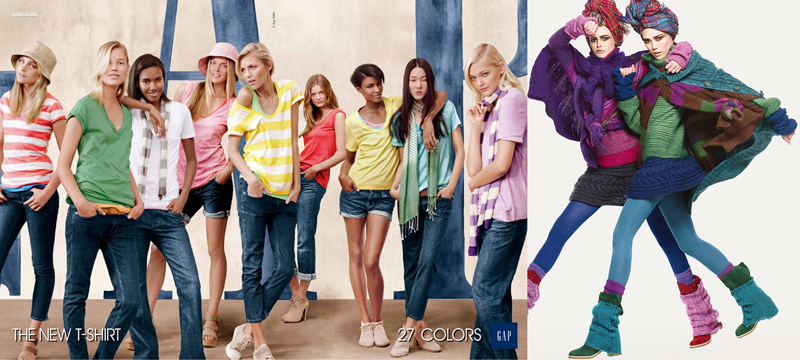
Asian models were always present in their domestic market but breaking through in to western market countries is a first for them. We can determine that they are becoming the next big thing when you start seeing them outside of their region. They used to only be featured as representative of their community in Gap and Benetton ad campaigns. But they now are featured as super models in the Harper’s Bazaar, Vogue US editions, Vogue Paris and recently Vogue Portugal of November and December issues, featured Asian Models on its cover.
In the recent generation of super models the American Devon Aoki represented by One Management in NY opened the way for Asian Super Models. She started at the age of 13 and she is unusually short for a model 5’5! She comes from a unique mix of Japanese on her Dad’s side and anglo-saxon from her Mum. What a unique face!! You might also remember the fantastic Russian model Irina Pantaeva from ten years ago. She is another example of how often mixed cultures render some of the most beautiful of physical features.
This rising new generation is coming from Japan, Korea and of course China. After the wave of Brazilian models and Russian models, I think the Asian models will endure for a long time. This phenomena is not due to the whimsical decision’s made by a Fashion Designer or an Editor-in-Chief of an influential internationally recognized fashion magazine. It has more to do with the new chessboard of the world economy, sales and advertising revenues. Shanghai is the place of choice to conquer by the luxury brands, who have been hit by the economic crisis. China is giving access to 10 million+ Chinese earning more than $25,000 (considered as the Chinese elite) and 300 million+ burgeoning Chinese middle class. A tempting prospect. The middle class has little knowledge of western luxury brands nor its codes of elegance, but is eager to discover them.
Ten years ago Moscow was the place to be where the big fortunes were and Vogue Russia was the most profitable magazine of all the editions of Vogue, due to good advertising revenue earnings for the magazine. Now China, Korea (The case of Japan is different as for years it was the only country in the region where luxury brands were installed. However Japan was hit by the crisis as well) are the places of great growth potential. In this gloomy market for luxury brands and classic press that need the advertising revenue, these new markets may hold the key to their sustained growth. More than ever as magazine sales are dropping and advertisers are cutting their budgets in western countries this strategic shift in course is a no brainier.
I am quite certain that the coming explanations that will be used by the luxury industry and the press for this geographical paradigm shift will have nothing to do with the economic conditions as it might be considered vulgar to justify their actions for economy reasons only. So look out for a sanitized version for their market shift.
The facial features of Asian Model are perfect for fashion designers and the cosmetics industry. Chinese models look like dolls with round small faces with generally long necks and aesthetically pleasing body proportions. Asian models silhouettes correspond perfectly with the sketches that designers render for their creations.
Although Liu, Du and Sun, are internationally appreciated, to most Chinese people they are far from “beauties.” Liu declares “My outstanding characteristic is that I don’t have a strong characteristic. I’m like a piece of blank paper, you can paint it any colour you want.” Both Lu and Li were considered not just “average” but actually “ugly” by many Chinese people. Maggie Mao, fashion editor from Grazia magazine, concurs that tiny faces are essential. “It (a small head) is a must,” she says. “As a matter of fact, you don’t necessarily have to have perfect facial features because there are always make-up tricks.” Top models must be tall, thin and leggy and have tiny heads with “palm faces,” so small they can be covered by an open palm of the hand. This goes to show that you don’t have to meet older ideas of perfection to become a model. In fact, perfection doesn’t sell so well.(1)
(1) – source
Asian Models will increase in their visibility in western countries because of the new shift of economic power towards China. If India becomes the new rising market tomorrow, there is a very good chance that more and more Indian models will be featured in western magazines.
The bottom line is this: It is the economy that is imposing the ethnic diversity that is featured in the press and luxury ad campaigns. Social and economic trends have always been closely tied… Follow the money!
Remember their names and faces: they are the next Sascha Pivovarova, Jessica Stam, and Lara Stone.
- Hye Jin Han, Liu Wen, AI tominaga @Marilynagency,
- Stephanie Shiu @NextCanada,
- Shu Pei Quin @NextParis,
- Du Juan, Emma Pei, Sonny Zhou @IMG,
- Lu Yan @Metropolitan,
- Mackenzie Hamilton @dnamodelagency,
- Fei Fei Sun @EliteManagementLondon,
- Tao Okamoto @Ford Models…
You want to know Asian models better? Have a look at this great blog: asianmodelsblog

